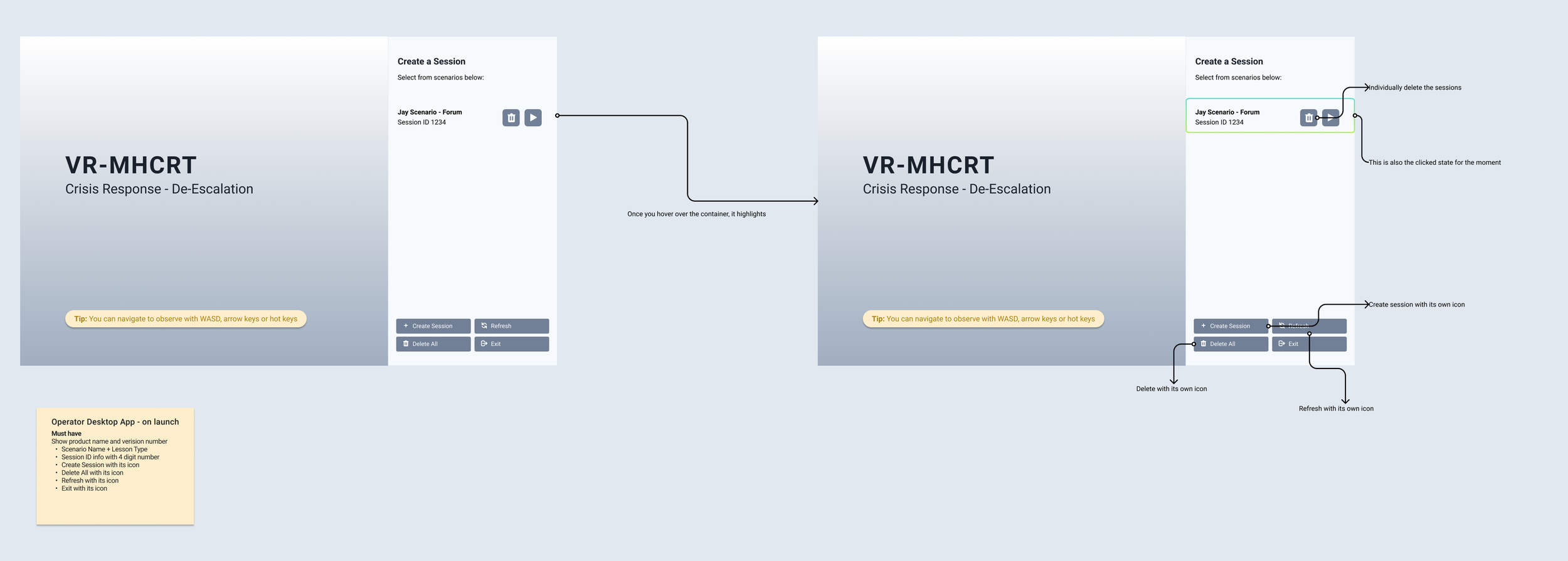Dark Slope- Lumeto
Created Involve XR, a robust learning & assessment ecosystem engineered for organizations seeking to implement data-centric, enterprise-level training & evaluation in the healthcare and public safety domains. Successfully deployed to over 15000 users.

As the Intermediate UX/UI Designer, I spearheaded the design initiatives for a remote, multiplayer, cross-platform VR simulation focused on mental health crisis de-escalation training.
My role involved close collaboration with a diverse, distributed team, including Technical Product Owner, Developers, QA's, SME's and business stakeholders.
At Lumeto, I had the unique opportunity to lead the design of a project that evolved from a mere concept to a fully functional scalable platform, truly embodying a 'zero to one' transformation.
The platform functions dually as a multi-user synchronous training hub and as asynchronous learning and practice environment, accessible via both web and VR interfaces.
PROCESS
Research > Design Principles > Proof of Concept > Narrative Design & Avatar Building > User Testing > Prototyping & Iteration > Delivery
GOAL
Successfully launched a scenario-based multiplayer training program to an expansive user base of over 15,000 individuals across Ontario, Canada.
PROBLEM
Traditional actor-led, scenario-based training presents significant logistical and financial challenges, making it difficult to scale across police services and educational institutions. The limitation often results in trainees receiving minimal practice before being deployed on the front lines, under-preparing them for real-life scenarios.
SOLUTION
Involve XR addresses these challenges by providing a standardized, scalable solution.
We created a web-VR platform where trainees can engage in unlimited practice sessions with NPC's (Non- Player Characters), honing their de-escalation skills in a controlled yet immersive environment.
As the UX/UI Designer leading this initiative, I played a crucial role in conceptualizing & implementing this innovative approach to training.
RESEARCH
By collaborating with SME's (Subject Matter Experts) who had developed the in-person, scenario-based training curriculum, I gained invaluable insights into the nuances of police force training protocols.
To augment this understanding, I conducted a series of informal interviews with the key stakeholders, including police chiefs and training facilitators, to better understand the challenges and requirements facing current recruits.
I synthesized these insights into comprehensive journey maps that guided the development process.
Additionally we conducted regular user testing to continually refine the training experience.
DESIGN PRINCIPLES & POC (PROOF OF CONCEPT)
Informed by our preliminary research, we established a foundational set of design principles centred around Immersion, Interactivity, Standardization to guide the platform's development. As the lead UX/UI Designer, I played a pivotal role in successfully delivering a Proof of Concept within a tight 3-month timeframe, featuring 4 diverse scenarios. This initial process paved the way for the continued expansion and diversification of additional training scenarios.
NARRATIVE DESIGN
In addition to my responsibilities in UX/UI Design, I also contributed significantly to the project's narrative design and art direction. My contributions included:
- Curating a comprehensive inventory of audio & visual assets tailored for each specific de-escalation scenario.
- Collaborating with the SME's to develop detailed floor plans, ensuring alignment with real-world training context.
- Crafting reference and mood boards to guide the technical artists in creating avatars and environmental elements.
- Orchestrating motion capture sessions to gather authentic movements and actions for NPC's.
Each of these tasks was integral to establishing an cohesive, immersive and highly functional training experience.
As the lead UX/UI Designer, I played a pivotal role in successfully delivering a Proof of Concept within a tight 3-month timeframe, featuring 4 diverse scenarios. This initial process paved the way for the continued expansion and diversification of additional training scenarios.
DESIGN EXPLORATIONS, PROTOTYPING & ITERATION
I took the lead in developing the information architecture and user flows for both the web and VR interfaces, creating detailed mockups that evolved through iterative cycles of real user feedback and business input.
Below you can see various iterations of desktop and vr iterations.
CONCLUSION
During my time as a UX/UI Designer at Lumeto, I played a versatile role in constructing a groundbreaking platform from its inception. Leading the design efforts for this particular vertical, I was actively involved in strategy formulation, co-authoring user stories with my Product Owner, and planning and executing research initiatives.
Additionally, I facilitated design workshops, engaging with a diverse array of stakeholders to create a participatory design culture and fine-tune the platform's usability and impact.
Despite navigating a landscape of tight deadlines and complex technical hurdles, we successfully rolled out our training program to an extensive audience of over 15,000 users across Ontario.












